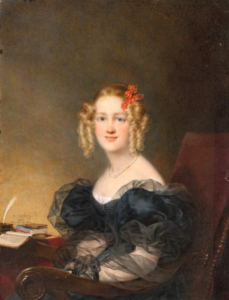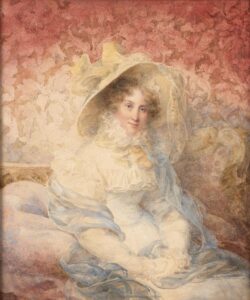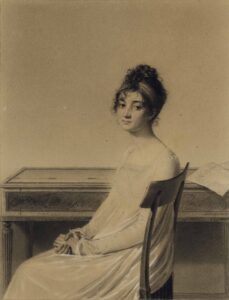Dear Zazie,
Here is today’s Lovers’ Chronicle from Mac Tag.
Rhett
The Lovers’ Chronicle
Dear Muse,
“Like a tea bag”
ha, no, another origin unknown
first used in a 2016 poem
“From the melodramatic years”
yes well, drama did as drama does
“Oh I had that coming”
it is an apt verb for any of this verse
the gamut was run from the depths
of without to the culmination of with
“Steeped in this romance”
together we are
© copyright 2023 mac tag/cowboycoleridge all rights reserved
in ways formed by routine
comin’ now on five years
sanctuary here, free from
pretendin’, pursuin’
all that matters
tunin’ these voices
from the past
visions help focus
resonate across years
an affirmation of purpose
reasons why and who
memories resumed
reachin’ out, do you hear
© copyright 2022.2033 mac tag/cowboycoleridge all rights reserved
© copyright 2021 mac tag/cowboy coleridge all rights reserved
© copyright 2020 mac tag/cowboy coleridge all rights reserved
for the one
who prefers,
often somehow
to damn near always
imagine, no longer
torn between with
and without, no more
may as well, may as not
discoverin’
that the hardness was necessary
to allow, to know and want again
that this does not begin to tell the story
© copyright 2019 mac tag/cowboy coleridge all rights reserved
Pale Love, Pale Rider
writin’ what might sound
like boastin’ of lack thereof,
which the unforgiven
well sighed
who laid aside joy
with haughtiness,
and learned to weep
with that weepin’ sans tears
who leaned into his hardness
and called in a languid sound,
who does not listen to her
and takes her pain
© copyright 2018.2023 mac tag/cowboycoleridge all rights reserved
been ridin’ since first light
my restin’ place for the night
a ruin… cabin and corral
after hours of pushin’
on through silence,
still to have silence,
still to eat, to sleep in it,
perfectly fits the mood
the great levels around me
lay chilly and the air
smells of wet weather
far in front the mesas rise
through the rain, indefinite
i want this isolation
not to be near anyone
steeped in reverie
© copyright 2016 mac tag all rights reserved
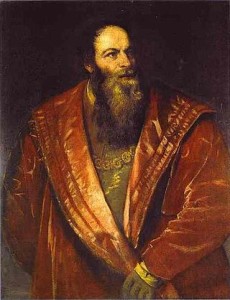
Today is the birthday of Pietro Aretino (Arezzo 20 April 1492 – 21 October 1556 Venice); author, playwright, poet, satirist and blackmailer who wielded immense influence on contemporary art and politics and may have invented modern literate pornography.
He was a lover of men, having declared himself “a sodomite” since birth. In a letter to Giovanni de’ Medici written in 1524 Aretino enclosed a satirical poem saying that due to a sudden aberration he had “fallen in love with a female cook and temporarily switched from boys to girls…” (My Dear Boy). In his comedy Il marescalco, the lead man is overjoyed to discover that the woman he has been forced to marry is really a page boy in disguise. While at court in Mantua he developed a crush on a young man called Bianchino, and annoyed Duke Federico with a request to plead with the boy on the writer’s behalf.
Safe in Venice, Aretino became a blackmailer, extorting money from men who had sought his guidance in vice. He “kept all that was famous in Italy in a kind of state of siege”, in Jakob Burckhardt’s estimation. Francis I of France and Charles V pensioned him at the same time, each hoping for some damage to the reputation of the other. “The rest of his relations with the great is mere beggary and vulgar extortion”, according to Burckhardt. Addison states that “he laid half Europe under contribution”.
Aretino is said to have died of suffocation from “laughing too much”. The more mundane truth may be that he died from a stroke or heart attack.
Verse
Io vorrei dir la donna ch’ebbe il vanto
di leggiadra et angelica bellezza,
la qual l’amato ben sospirò tanto
che depose la gioia e l’alterezza,
et imparato a pianger con quel pianto
che ad altri insegnò già la sua durezza:
Medor pur chiama in suon languido e fioco,
che non l’ascolta e ‘l suo mal prende a gioco.

Self-Portrait, 1880, Musée d’Orsay
|

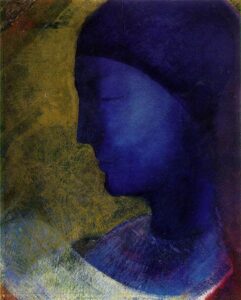
La Cellule d’or (1892), Londres, British Museum
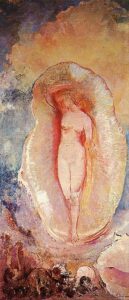
La Naissance de Vénus (1912), New York, Museum of Modern Art

-

Caliban, 1881 (Musée d’Orsay)
-
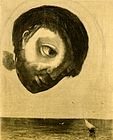
“Guardian Spirit of the Waters”, 1878
-
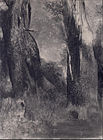
The Trees, c. 1890s (Museum of Fine Arts, Houston)
-
Lady of the Flowers, c. 1890–95 (Honolulu Museum of Art)
-
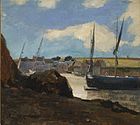
The Port of Morgat, 1882, Dallas Museum of Art
-
The Cyclops, 1898 (Kröller-Müller Museum)
-

Ophelia, 1900–1905 (Dian Woodner Collection)
-
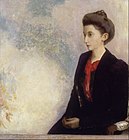
Baroness Robert de Domecy, 1900 (Musée d’Orsay)
-

Vase of Flowers, ca. 1900-10, (Princeton University Art Museum)
-
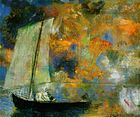
Flower Clouds, 1903 (The Art Institute of Chicago)
-

The Buddha, 1904 (Musée d’Orsay)
-

Initiation to Study: Two Young Ladies (vers 1905) Dallas Museum of Art, oil on canvas 93 x 65 cm
-

Apparition, 1905-10, (Princeton University Art Museum)
-
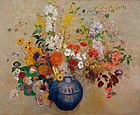
Flowers, 1909
-

Chariot of Apollo, c. 1910 (Musée d’Orsay)
-

Portrait of Violette Heymann, 1910 (Cleveland Museum of Art)
-
Saint Sebastian, 1910–1912, (National Gallery of Art)
-

Coquille, 1912 (Musée d’Orsay)
-
Pandora, c. 1914 (Metropolitan Museum of Art)
-

Evocation, undated, private collection
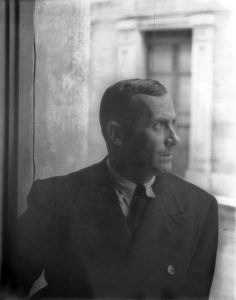 Today is the birthday of Joan Miró i Ferrà (Barcelona; 20 April 1893 – 25 December 1983 Palma (Majorca)); painter, sculptor, and ceramicist. A museum dedicated to his work, the Fundació Joan Miró, was established in his native city in 1975, and another, the Fundació Pilar i Joan Miró, was established in his adoptive city of Palma de Mallorca in 1981.
Today is the birthday of Joan Miró i Ferrà (Barcelona; 20 April 1893 – 25 December 1983 Palma (Majorca)); painter, sculptor, and ceramicist. A museum dedicated to his work, the Fundació Joan Miró, was established in his native city in 1975, and another, the Fundació Pilar i Joan Miró, was established in his adoptive city of Palma de Mallorca in 1981.Earning international acclaim, his work has been interpreted as Surrealism, a sandbox for the subconscious mind, a re-creation of the childlike, and a manifestation of Catalan pride. In numerous interviews dating from the 1930s onwards, Miró expressed contempt for conventional painting methods as a way of supporting bourgeois society, and declared an “assassination of painting” in favour of upsetting the visual elements of established painting.
Miró married Pilar Juncosa in Palma on 12 October 1929.
Gallery
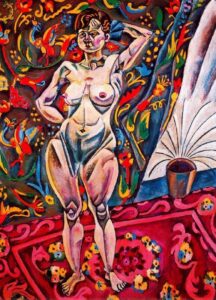
desnudo de pie
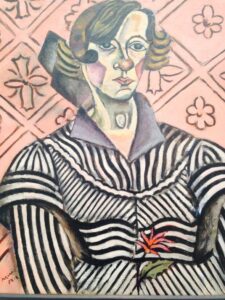
Retrato de Juanita Obrador 1918
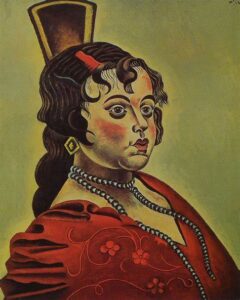
Retrato de una bailarina española (1921)
 April 1917, Portrait of Vincent Nubiola (Portrait de Vincenç Nubiola), oil on canvas, 104 x 113 cm, Folkwang Museum
April 1917, Portrait of Vincent Nubiola (Portrait de Vincenç Nubiola), oil on canvas, 104 x 113 cm, Folkwang Museum 1918, La casa de la palmera (House with Palm Tree), oil on canvas, 65 x 73 cm, Museo Nacional Centro de Arte Reina Sofía
1918, La casa de la palmera (House with Palm Tree), oil on canvas, 65 x 73 cm, Museo Nacional Centro de Arte Reina Sofía 1918, Portrait of Heriberto Casany (Le chauffeur), oil on canvas, 70.2 x 62 cm, Kimbell Art Museum
1918, Portrait of Heriberto Casany (Le chauffeur), oil on canvas, 70.2 x 62 cm, Kimbell Art Museum 1919, Nu au miroir (Nude with a Mirror, Naakt met mirror), oil on canvas, 113 x 102 cm, Kunstsammlung Nordrhein-Westfalen
1919, Nu au miroir (Nude with a Mirror, Naakt met mirror), oil on canvas, 113 x 102 cm, Kunstsammlung Nordrhein-Westfalen 1920, Les cartes espagnoles (The Spanish Playing Cards), oil on canvas, 63.5 x 69.5 cm, Minneapolis Institute of Arts
1920, Les cartes espagnoles (The Spanish Playing Cards), oil on canvas, 63.5 x 69.5 cm, Minneapolis Institute of Arts 1920, Horse, Pipe and Red Flower, oil on canvas, 82.6 × 74.9 cm, Philadelphia Museum of Art
1920, Horse, Pipe and Red Flower, oil on canvas, 82.6 × 74.9 cm, Philadelphia Museum of Art Carrer de Pedralbes, drawing, published in Troços, Segona sèrie, N. 4, March 1918Dona i Ocell, 1982, Barcelona, Spain
Carrer de Pedralbes, drawing, published in Troços, Segona sèrie, N. 4, March 1918Dona i Ocell, 1982, Barcelona, Spain Pájaro lunar (Moon Bird), 1966, Reina Sofia Museum, Madrid
Pájaro lunar (Moon Bird), 1966, Reina Sofia Museum, Madrid-

The mosaic Pla de l’Os by the artist on the Ramblas of Barcelona
-
Interior views of Museo Reina Sofía
-

Hakone open-air museum
-
Grande Maternite
-
Sculpture at Fundació Joan Miró
Mac Tag





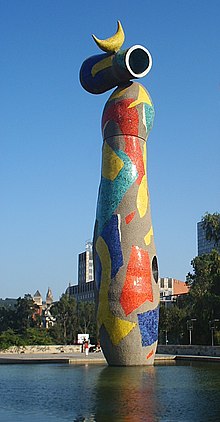



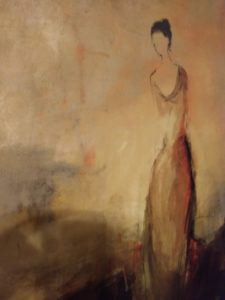
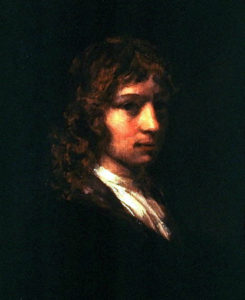 Today is the baptismal day of Willem Drost (Amsterdam 19 April 1633 – buried 25 February 1659); Dutch Golden Age painter and printmaker.
Today is the baptismal day of Willem Drost (Amsterdam 19 April 1633 – buried 25 February 1659); Dutch Golden Age painter and printmaker.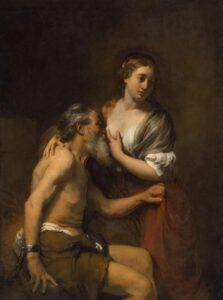
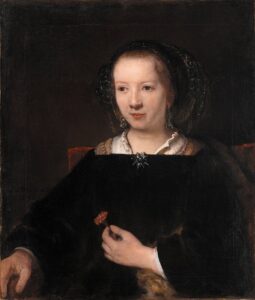

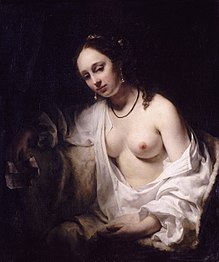



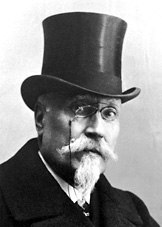 Today is the birthday of José Echegaray y Eizaguirre (Madrid 19 April 1832 – 14 September 1916 Madrid); civil engineer, mathematician, statesman, and one of the leading Spanish dramatists of the last quarter of the 19th century. He was awarded the 1904 Nobel Prize for Literature “in recognition of the numerous and brilliant compositions which, in an individual and original manner, have revived the great traditions of the Spanish drama.”
Today is the birthday of José Echegaray y Eizaguirre (Madrid 19 April 1832 – 14 September 1916 Madrid); civil engineer, mathematician, statesman, and one of the leading Spanish dramatists of the last quarter of the 19th century. He was awarded the 1904 Nobel Prize for Literature “in recognition of the numerous and brilliant compositions which, in an individual and original manner, have revived the great traditions of the Spanish drama.”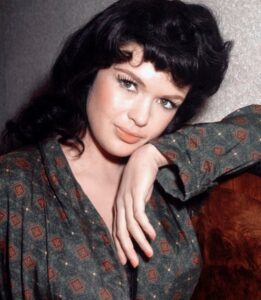

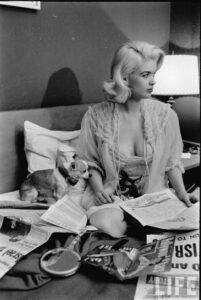
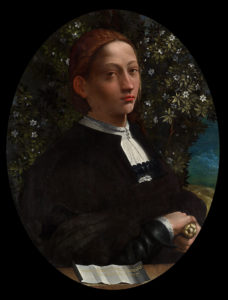


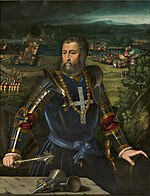
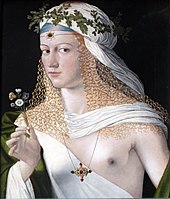


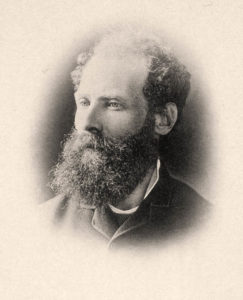 Today is the birthday of poet, philosopher and writer Antero de Quental (Ponta Delgada on the island of São Miguel, in the Azores18 April 1842 – 11 September 1891 Ponta Delgada). His works became a milestone in the Portuguese language alongside those of Camões, Bocage, and Fernando Pessoa.
Today is the birthday of poet, philosopher and writer Antero de Quental (Ponta Delgada on the island of São Miguel, in the Azores18 April 1842 – 11 September 1891 Ponta Delgada). His works became a milestone in the Portuguese language alongside those of Camões, Bocage, and Fernando Pessoa.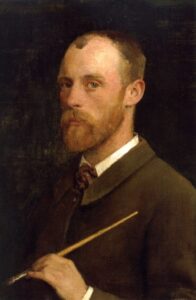 Today is the birthday of George Clausen (London 18 April 1852 – 22 November 1944 Cold Ash, West Berkshire, England); artist working in oil and watercolour, etching, mezzotint, drypoint and occasionally lithographs.
Today is the birthday of George Clausen (London 18 April 1852 – 22 November 1944 Cold Ash, West Berkshire, England); artist working in oil and watercolour, etching, mezzotint, drypoint and occasionally lithographs.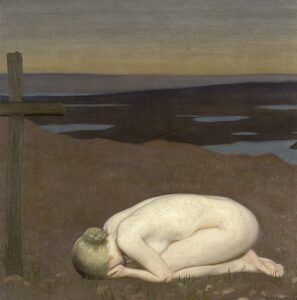
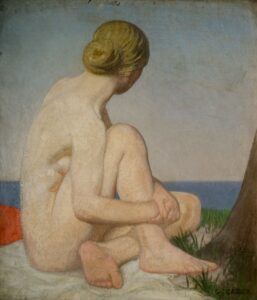
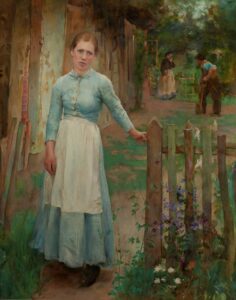
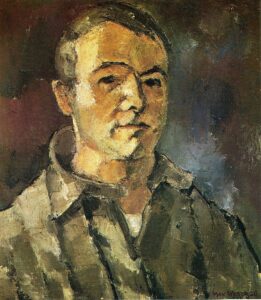 And today is the birthday of Max Weber (Białystok, Poland; April 18, 1881 – October 4, 1961); painter and one of the first American Cubist painters who, in later life, turned to more figurative Jewish themes in his art. He is best known today for Chinese Restaurant (1915), in the collection of the Whitney Museum of American Art, “the finest canvas of his Cubist phase,” in the words of art historian Avis Berman.
And today is the birthday of Max Weber (Białystok, Poland; April 18, 1881 – October 4, 1961); painter and one of the first American Cubist painters who, in later life, turned to more figurative Jewish themes in his art. He is best known today for Chinese Restaurant (1915), in the collection of the Whitney Museum of American Art, “the finest canvas of his Cubist phase,” in the words of art historian Avis Berman.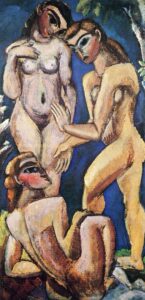
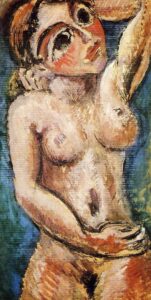
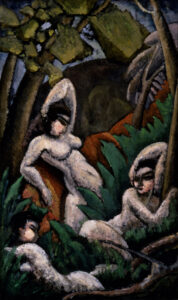

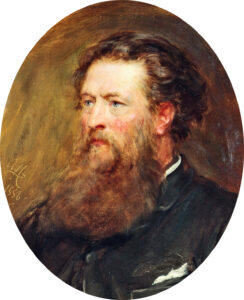
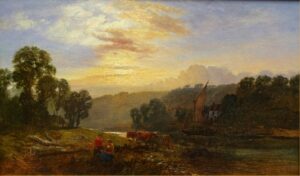
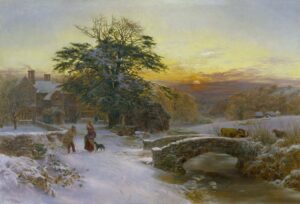
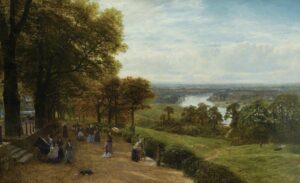



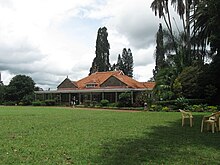
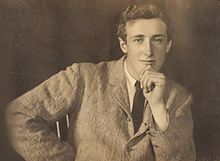


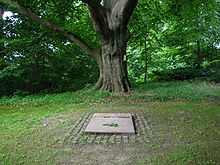

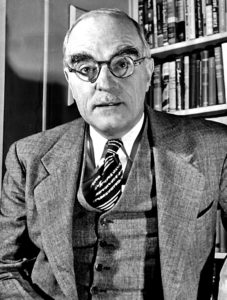 And today is the birthday of Thornton Wilder (born Thornton Niven Wilder; Madison, Wisconsin; April 17, 1897 – December 7, 1975 Hamden, Connecticut); playwright and novelist. He won three Pulitzer Prizes—for the novel The Bridge of San Luis Rey, and for the plays Our Town and The Skin of Our Teeth — and a U.S. National Book Award for the novel The Eighth Day.
And today is the birthday of Thornton Wilder (born Thornton Niven Wilder; Madison, Wisconsin; April 17, 1897 – December 7, 1975 Hamden, Connecticut); playwright and novelist. He won three Pulitzer Prizes—for the novel The Bridge of San Luis Rey, and for the plays Our Town and The Skin of Our Teeth — and a U.S. National Book Award for the novel The Eighth Day.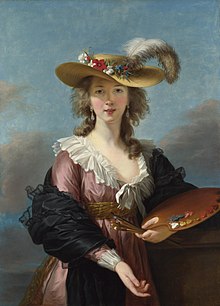
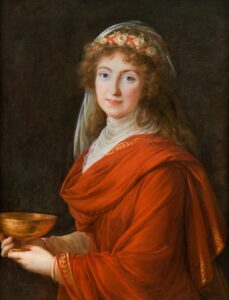











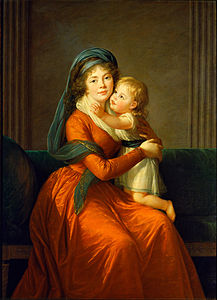





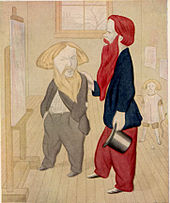
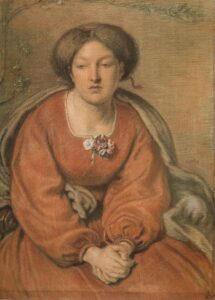
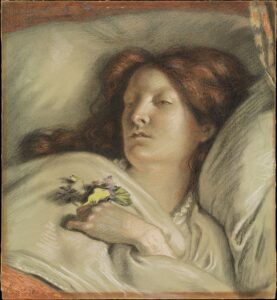


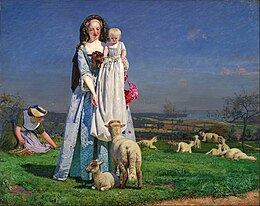
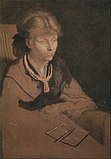
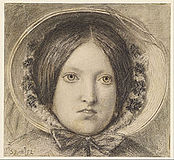





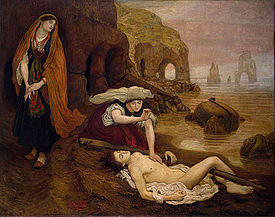
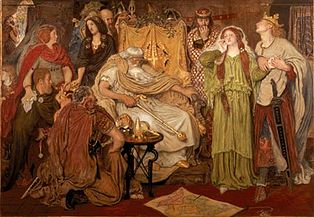


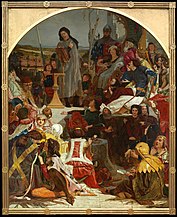

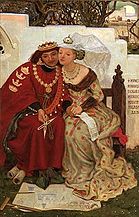
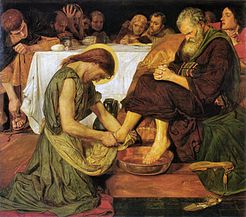
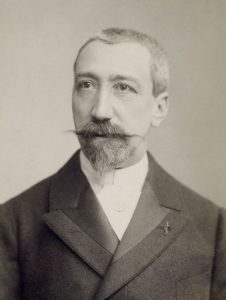 Today is the birthday of Anatole France
Today is the birthday of Anatole France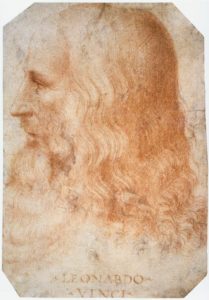 Today is the birthday of Leonardo da Vinci (Leonardo di ser Piero da Vinci, Vinci 15 April 1452 – 2 May 1519 Amboise, Kingdom of France); polymath whose areas of interest included invention, painting, sculpting, architecture, science, music, mathematics, engineering, literature, anatomy, geology, astronomy, botany, writing, history, and cartography. He has been called the father of paleontology, ichnology, and architecture, and is widely considered one of the greatest painters of all time. His genius epitomized the Renaissance humanist ideal.
Today is the birthday of Leonardo da Vinci (Leonardo di ser Piero da Vinci, Vinci 15 April 1452 – 2 May 1519 Amboise, Kingdom of France); polymath whose areas of interest included invention, painting, sculpting, architecture, science, music, mathematics, engineering, literature, anatomy, geology, astronomy, botany, writing, history, and cartography. He has been called the father of paleontology, ichnology, and architecture, and is widely considered one of the greatest painters of all time. His genius epitomized the Renaissance humanist ideal.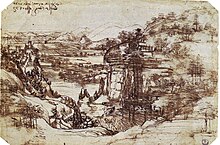
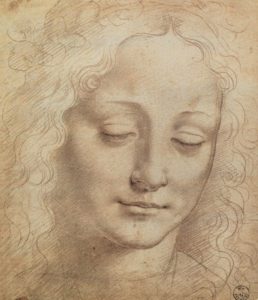













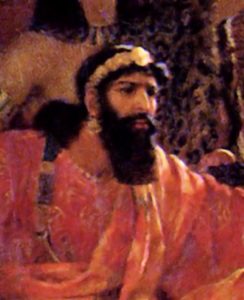 On this day in 1738 – Serse, an Italian opera by George Frideric Handel receives its premiere performance in London, England. It is an opera seria in three acts. The Italian libretto was adapted by an unknown hand from that by Silvio Stampiglia for an earlier opera of the same name by Giovanni Bononcini in 1694. Stampiglia’s libretto was itself based on one by Nicolò Minato that was set by Francesco Cavalli in 1654. The opera is set in Persia (modern-day Iran) in 480 BC and is very loosely based upon Xerxes I of Persia, though there is little in either the libretto or music that is relevant to that setting. Serse, originally sung by a castrato, is now usually performed by a mezzo-soprano, contralto or countertenor. The opening aria, “Ombra mai fu”, sung by Xerxes to a plane tree (Platanus orientalis). Ombra is the Italian word for shade, as in shade tree. In the writings of the Greek historian Herodotus, Xerxes is depicted as an all-powerful despot, whose every whim became law. As evidence of the irrational effect of absolute power, Herodotus tells of Xerxes’ fondness for a certain plane tree that he ordered decorated with gold ornaments and put under perpetual military guard as a sign of royal favor. In Handel’s opera, the famous “Largo” is actually Xerxes’s dreamy song to this famous tree-and the “shade” referred to is the sort to be found under its gold-bedecked branches. It is set to one of Handel’s best-known melodies, and is often known as
On this day in 1738 – Serse, an Italian opera by George Frideric Handel receives its premiere performance in London, England. It is an opera seria in three acts. The Italian libretto was adapted by an unknown hand from that by Silvio Stampiglia for an earlier opera of the same name by Giovanni Bononcini in 1694. Stampiglia’s libretto was itself based on one by Nicolò Minato that was set by Francesco Cavalli in 1654. The opera is set in Persia (modern-day Iran) in 480 BC and is very loosely based upon Xerxes I of Persia, though there is little in either the libretto or music that is relevant to that setting. Serse, originally sung by a castrato, is now usually performed by a mezzo-soprano, contralto or countertenor. The opening aria, “Ombra mai fu”, sung by Xerxes to a plane tree (Platanus orientalis). Ombra is the Italian word for shade, as in shade tree. In the writings of the Greek historian Herodotus, Xerxes is depicted as an all-powerful despot, whose every whim became law. As evidence of the irrational effect of absolute power, Herodotus tells of Xerxes’ fondness for a certain plane tree that he ordered decorated with gold ornaments and put under perpetual military guard as a sign of royal favor. In Handel’s opera, the famous “Largo” is actually Xerxes’s dreamy song to this famous tree-and the “shade” referred to is the sort to be found under its gold-bedecked branches. It is set to one of Handel’s best-known melodies, and is often known as 





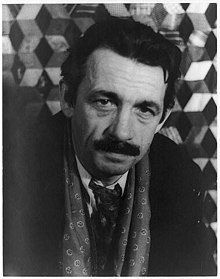
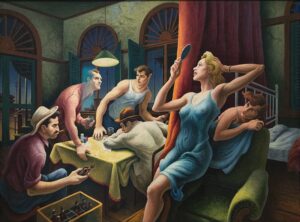
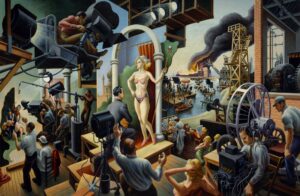
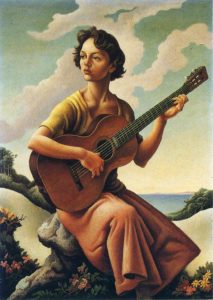



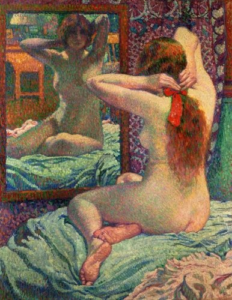

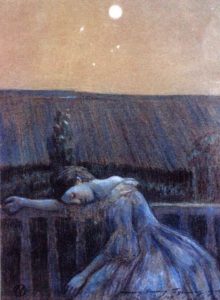


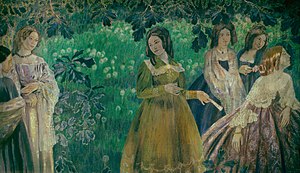


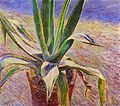

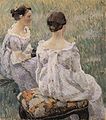






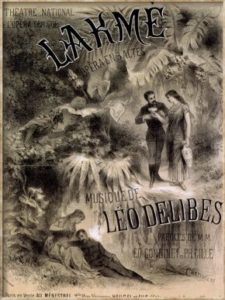 On this day in 1883 the premiere of Lakmé, an opera in three acts by Léo Delibes to a French libretto by Edmond Gondinet and Philippe Gille.
On this day in 1883 the premiere of Lakmé, an opera in three acts by Léo Delibes to a French libretto by Edmond Gondinet and Philippe Gille.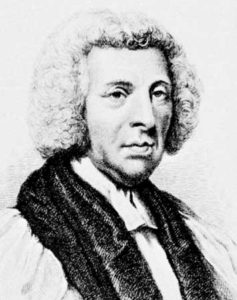
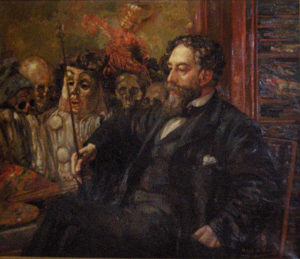 Today is the birthday of James Ensor (James Sidney Edouard, Baron Ensor; Ostend, Belgium; 13 April 1860 – 19 November 1949 Ostend); painter and printmaker, an important influence on expressionism and surrealism who lived in Ostend for almost his entire life. He was associated with the artistic group Les XX.
Today is the birthday of James Ensor (James Sidney Edouard, Baron Ensor; Ostend, Belgium; 13 April 1860 – 19 November 1949 Ostend); painter and printmaker, an important influence on expressionism and surrealism who lived in Ostend for almost his entire life. He was associated with the artistic group Les XX.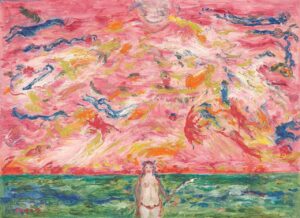
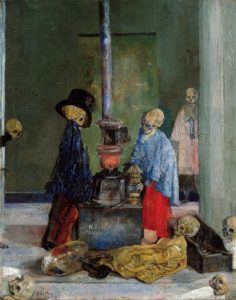
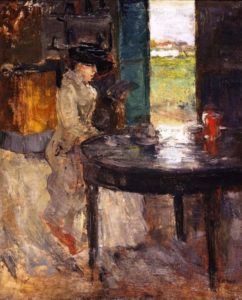
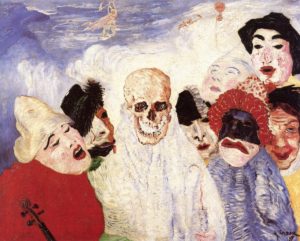
 Today is the birthday of Samuel Beckett (Samuel Barclay Beckett, Dublin, 3 April 1906 – 22 December 1989 Paris); avant-garde novelist, playwright, theatre director, and poet, who lived in Paris for most of his adult life and wrote in both English and French. In my opinion, one of the most influential writers of the 20th century. Beckett’s work offers a bleak, tragicomic outlook on human existence, often coupled with black comedy and gallows humour, and became increasingly minimalist in his later career. He is considered one of the last modernist writers, and one of the key figures in what has been called the “Theatre of the Absurd”. Beckett was awarded the 1969 Nobel Prize in Literature “for his writing, which—in new forms for the novel and drama—in the destitution of modern man acquires its elevation.”
Today is the birthday of Samuel Beckett (Samuel Barclay Beckett, Dublin, 3 April 1906 – 22 December 1989 Paris); avant-garde novelist, playwright, theatre director, and poet, who lived in Paris for most of his adult life and wrote in both English and French. In my opinion, one of the most influential writers of the 20th century. Beckett’s work offers a bleak, tragicomic outlook on human existence, often coupled with black comedy and gallows humour, and became increasingly minimalist in his later career. He is considered one of the last modernist writers, and one of the key figures in what has been called the “Theatre of the Absurd”. Beckett was awarded the 1969 Nobel Prize in Literature “for his writing, which—in new forms for the novel and drama—in the destitution of modern man acquires its elevation.”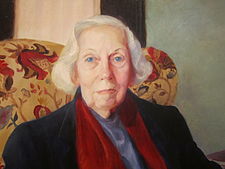 Today is the birthday of Eudora Welty (Eudora Alice Welty, Jackson, Mississippi April 13, 1909 – July 23, 2001 Jackson, Mississippi); short story writer and novelist who wrote about the American South. Her novel The Optimist’s Daughter won the Pulitzer Prize in 1973. Welty was awarded the Presidential Medal of Freedom, among numerous awards including the Order of the South. She was the first living author to have her works published by the Library of America. Her house in Jackson has been designated as a National Historic Landmark and is open to the public as a house museum.
Today is the birthday of Eudora Welty (Eudora Alice Welty, Jackson, Mississippi April 13, 1909 – July 23, 2001 Jackson, Mississippi); short story writer and novelist who wrote about the American South. Her novel The Optimist’s Daughter won the Pulitzer Prize in 1973. Welty was awarded the Presidential Medal of Freedom, among numerous awards including the Order of the South. She was the first living author to have her works published by the Library of America. Her house in Jackson has been designated as a National Historic Landmark and is open to the public as a house museum. Today is the birthday of Seamus Heaney (Seamus Justin Heaney; Tamniaran, County Londonderry, Northern Ireland, 13 April 1939 – 30 August 2013 Blackrock, Dublin); poet, playwright and translator. He received the 1995 Nobel Prize in Literature. Among his best-known works is Death of a Naturalist (1966), his first major published volume.
Today is the birthday of Seamus Heaney (Seamus Justin Heaney; Tamniaran, County Londonderry, Northern Ireland, 13 April 1939 – 30 August 2013 Blackrock, Dublin); poet, playwright and translator. He received the 1995 Nobel Prize in Literature. Among his best-known works is Death of a Naturalist (1966), his first major published volume.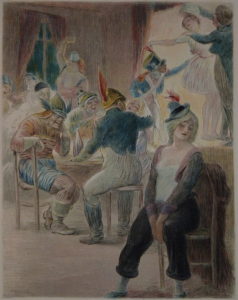
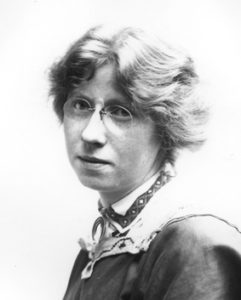 Today is the birthday of Imogen Cunningham (Portland April 12, 1883 – June 23, 1976 San Francisco); photographer known for her botanical photography, nudes, and industrial landscapes. Cunningham was a member of the California-based Group f/64, known for its dedication to the sharp-focus rendition of simple subjects.
Today is the birthday of Imogen Cunningham (Portland April 12, 1883 – June 23, 1976 San Francisco); photographer known for her botanical photography, nudes, and industrial landscapes. Cunningham was a member of the California-based Group f/64, known for its dedication to the sharp-focus rendition of simple subjects.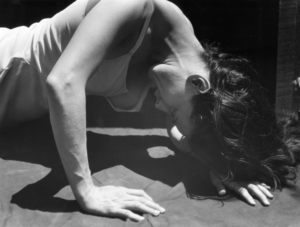
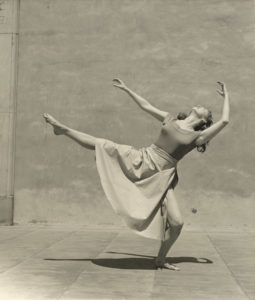







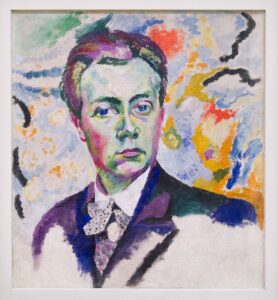 And today is the birthday of Robert Delaunay (Paris 12 April 1885 – 25 October 1941 Montpellier); artist who, with his wife Sonia Delaunay and others, co-founded the Orphism art movement, noted for its use of strong colours and geometric shapes. His later works were more abstract, reminiscent of Paul Klee. His key influence related to bold use of colour and a clear love of experimentation with both depth and tone.
And today is the birthday of Robert Delaunay (Paris 12 April 1885 – 25 October 1941 Montpellier); artist who, with his wife Sonia Delaunay and others, co-founded the Orphism art movement, noted for its use of strong colours and geometric shapes. His later works were more abstract, reminiscent of Paul Klee. His key influence related to bold use of colour and a clear love of experimentation with both depth and tone.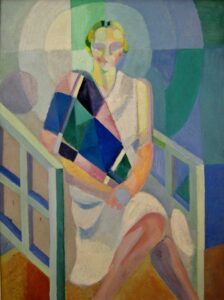
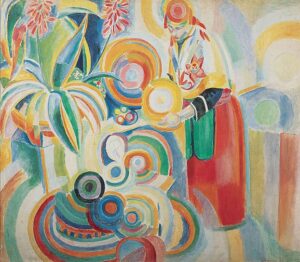
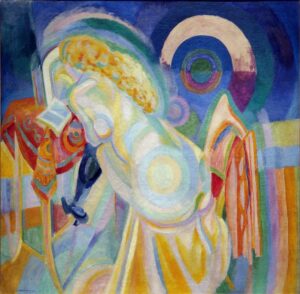
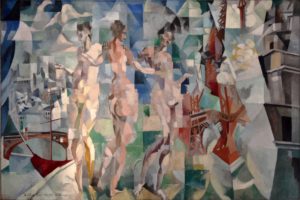




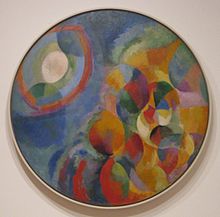

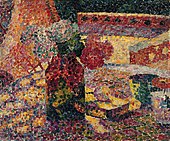

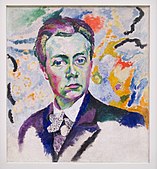
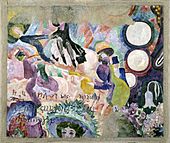
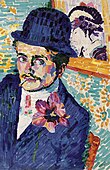

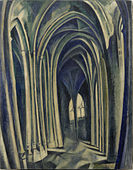
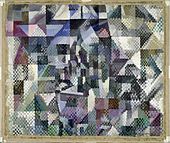


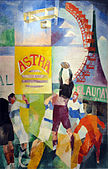


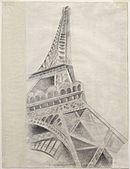
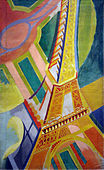
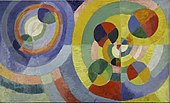
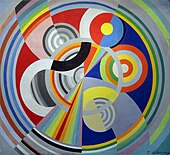
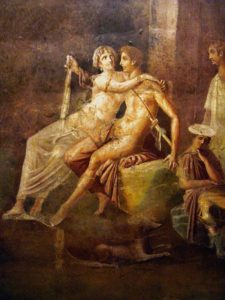 On this day in 1689, perhaps; t
On this day in 1689, perhaps; t